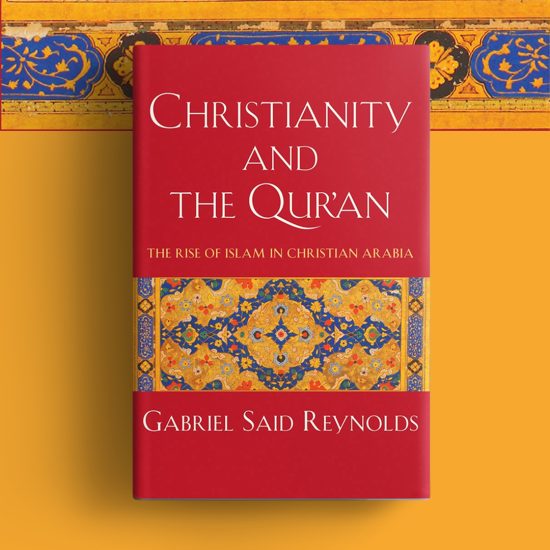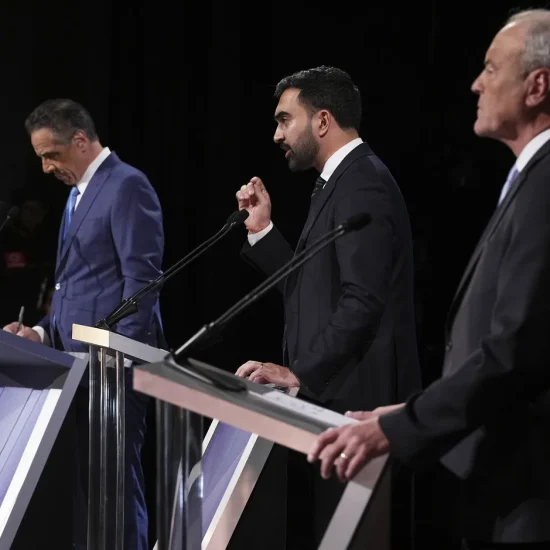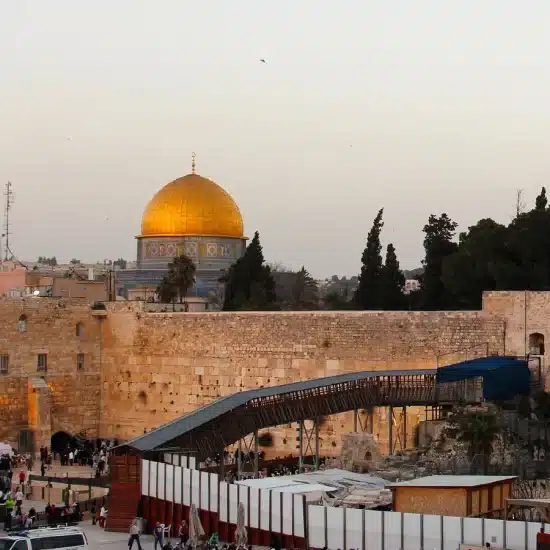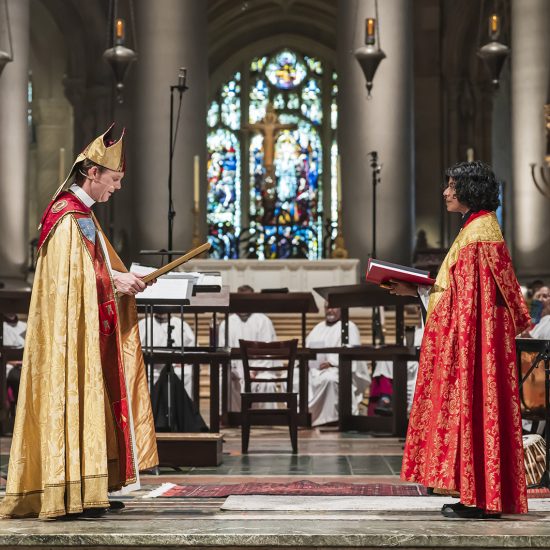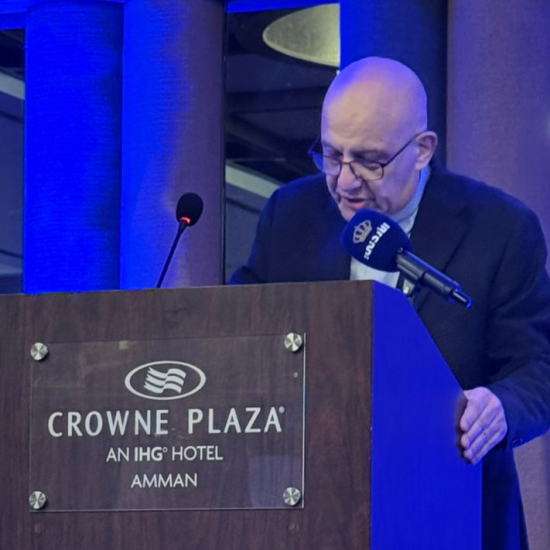

THE QUEST OF THE HISTORICAL MUHAMMAD AND OTHER STUDIES ON FORMATIVE ISLAM. By Stephen J. Shoemaker. Eugene, OR: Cascade Books, 2024. Xi +156 pages.
Who is Muhammad? Surely that is a question easily answered. He was the recipient of a divine revelation in the form of the Qur’an and the founder of Islam. He was born in the sixth century C.E. in Mecca, lived in Medina, returned to Mecca, and united the Arab tribes. After that, in short order, he and his successors overran the Middle East and beyond. He is a historical figure whose story has been told in great detail by his followers. We have the Qur’an and the Hadiths and reports from outside observers, but, what if we don’t know as much as we think? What if we know less about the historical Muhammad than we do about the historical Jesus? These are questions that rarely get asked because unlike with Jesus there really hasn’t been a quest for the historical Muhammad. As with Jesus, this isn’t a question of whether Muhammad was a real person. It isn’t a question of whether he created a movement that became Islam. But, there are deeper questions about Muhammad’s identity that remain unanswered. So, maybe we don’t know as much about him as we thought we did.

Robert D. Cornwall
Stephen Shoemaker, professor of religious studies and Ira F. Gaston fellow in Christian Studies at the University of Oregon, seeks to launch a quest for the historical Muhammad. While Shoemaker is a Christian and teaches in the area of Christian studies, especially early Christian history, he has written widely on Islam. As I’ve read his work, I’ve always found him to be fair in his treatment of Islam. Nevertheless, asking questions about the identity of the founder of a religion is always fraught with a bit of danger. One might wonder if Shoemaker has an apologetic agenda in mind in raising the questions raised here. I don’t believe that is true, but I know that many Muslims will ask questions about his motive. This isn’t the first book Shoemaker has written that addresses the question of Islamic origins. He also wrote a book that I’ve yet to read, but which seeks to engage in a historical-critical analysis of the Qur’an. That is something that has rarely been undertaken, in large part because, unlike the Bible, it is assumed that the Qur’an is the work of a single individual. For Muslims, that single individual is not even Muhammad, it is God who delivers the message of the Qur’an through the auspices of the angel Gabriel.
While the bulk of this book focuses on the historical Muhammad, there are also essays in the book dealing with the Qur’an and Islamic eschatology. The first chapter in the book, however, addresses the question of the historical Muhammad. The essay, which is titled “The Quest of the Historical Muhammad,” offers an English version of an essay to be published in a volume on Islam that will be published in French. While that volume may eventually appear in an English translation, Shoemaker makes it available in English here in this book. Shoemaker argues that we know very little about the historical Muhammad. In fact, he is something of a cipher. This view of Muhammad goes against the standard scholarly perspective, which has assumed that we have clear reportage on Muhammad’s life and work. Shoemaker questions that scholarly consensus, noting that while we have the Qur’an, which can be traced to Muhammad but was only written down late in the seventh century, the first full biography of Muhammad did not appear until the mid-eighth century CE. That was a century and a half after Muhammad’s death. He points out that the earliest biographical materials came not from Muslim sources, but non-Muslim sources, and that was well before the first Muslim sources on Muhammad. He writes of these non-Muslim reports: “While their accounts are not always free from polemic, these earliest biographers of Muhammad often show genuine interest in learning more about the founder of this new religious community that invaded and subjugated their homelands: indeed, it is this first-hand experience that makes their accounts particularly valuable.” (p. 5).
What Shoemaker does in this book is introduce us to predominantly Western attempts to tell the story of Muhammad, beginning in the seventeenth century with the work of Henry Stubbe who sought to describe the rise of Islam. Stubbe’s work, however, which was written in the seventeenth century wasn’t published until the twentieth century. While there were Western attempts to tell the story of Muhammad’s life and the origins of Islam, the earliest attempts to write scholarly biographies didn’t take place until the nineteenth century. It is worth noting that this is also the period in which the quest for the historical Jesus also took off. Shoemaker suggests that the first critical biography was written by Gustav Weil in 1843. Weil sought to portray Muhammad as a prophet and not a manipulative charlatan as many previous attempts had done. However, he also embraced the long-held view that Muhammad was an epileptic. From Weil, Shoemaker takes us through various attempts to write about Muhammad’s life, leading to works emerging in the twenty century. He points us to works that focus not only on religion but also on economics and politics, which is understandable. Of course, there are theological lives as well, some of which are apologetic. One thing that Shoemaker wants to stress is the eschatological dimensions of Muhammad’s message and movement. He also introduces us to the Islamic sources of information on Muhammad that became more accessible in the late nineteenth century. These sources include the eighth-century biography of Muhammad by Ibn Ishaq as well as the Qur’an itself.
What Shoemaker demonstrates with this essay is that while the earliest true biographies don’t appear until the mid-8th century, it was assumed by most scholars that the picture presented in those biographies offers us straightforward history. Shoemaker questions that interpretation of these early sources. He also raises questions about the development of the Qur’an, which he reminds us, has a lot of connections with biblical materials. He also addresses the traditional view of Mecca and Medina (Yathrib), showing us that the Mecca of the sixth century wasn’t a thriving economic center or a pilgrimage center. Instead, it was a rather poor village that lay off the main trade routes and had a population of maybe five hundred people. As for Medina, it might have had a population of around a thousand people. As for the Kabba, which became Islam’s holiest shrine, there is no evidence that it was a pilgrimage site until after Muhammad’s rise to power. While the stories surrounding these sites form the foundation of what we know about Muhammad, many questions need to be answered. Therefore, there is a need for a historical quest so we can answer the questions. As I read this essay, I do not believe that Shoemaker wants to undermine Islam. Rather, as with questions about the historical Jesus, he is concerned that too many questions are being left unanswered, perhaps in the name of piety.
Chapter 1 offers us an introduction to a possible quest to discover the historical Muhammad. From that important essay, we move to Chapter 2. This chapter offers us an intriguing exploration of the idea that the Qur’an is “A New Arabic Apocryphon from Late Antiquity.” What Shoemaker is saying here is that the Qur’an could be seen as an expression of biblical apocryphal writings. That is because so much of the Qur’an involves biblical materials and stories. Significant portions of the Qur’an focus on Abraham, Moses, and Jesus. While the Qur’an became Islamic sacred writ, he believes it can be effectively interpreted in connection with the Bible, in much the same way as the Book of Mormon. Shoemaker writes that the benefit of viewing the Qur’an as biblical apocrypha is that “it affords a new avenue for approaching the peculiar relationship between the Qur’an and the biblical traditions of Christianity and Judaism.” As such, it allows us to “understand now how the Qur’an recognizes and embraces the authority of these antecedent scriptural collections while simultaneously reconfiguring and supplementing their contents. Such adaptation and modification of biblical traditions is the vital essence of apocryphal writings” (p. 79). This is a fascinating idea that may bear important fruit for Abrahamic dialog.
The third chapter in The Quest of the Historical Muhammad and Other Studies on Formative Islam asks the question: “The Qur’an’s Holy House: Mecca or Jerusalem?” In this chapter, Shoemaker points out that “One of the clearest and most uncontestable facts to emerge from the contemporary Jewish and Christian witnesses to the rise of Islam is that Muhammad’s earliest followers were well-nigh obsessed with restoring worship and dignity to the site of the destroyed Jewish temple in Jerusalem” (p. 81). He points us to the Dome of the Rock, which is among the oldest if not the oldest Islamic building in existence. It was built to mark the Holy of Holies of the Jewish Temple. Before Mecca became the focal point of Islamic worship, Jerusalem, and the site marked by the Dome of the Rock, was its center. That is true even though there is no evidence that Muhammad or his earliest followers made a pilgrimage to this site.
The final two chapters of the book focus on the apocalyptic and eschatological dimensions of Muhammad’s message. Shoemaker argues that like Jesus, Muhammad was an apocalyptic preacher who likely believed that the end of time would come soon, perhaps in his lifetime. Chapter 4 focuses on the role that God’s eschatological reign plays in the Qur’an. He focuses on the phrase Amr Allah, an Arabic phrase that Shoemaker believes should be translated as the reign or dominion of God. There is quite a bit of overlap between chapters 4 and 5 with some paragraphs appearing in both chapters. So, in chapter 5, Shoemaker sets “Qur’anic Eschatology in Its Biblical and Late Ancient Matrix.” What he does here is demonstrate that the Qur’an is a distinctly eschatological text. Since the Qur’an appeared as a written document long after Muhammad’s death the fact that the end of the age did not occur before his death suggests that these elements are original aspects of Muhammad’s message. He points out the similarities in message between the Qur’an and the biblical texts, something often overlooked, but important to understanding Muhammad and his movement.
I would imagine that Stephen Shoemaker’s call for a quest to discover the historical Muhammad may not be well received within the Islamic community, any more than Shoemaker’s arguments regarding the formation of the Qur’an will be well received. Nevertheless, as an interested observer who is involved in interfaith conversations, including with Muslims, I found the essays in The Quest of the Historical Muhammad to be quite helpful in better understanding the origins of Islam, especially in relation to its connections with Judaism and Christianity (here I note the possible connections with Syriac Christianity). While Shoemaker ventures into largely unknown territory, I do not find his work to be polemical. Rather, as I read his work, I’ve found him to be a fair arbiter of Islamic ideas. Perhaps because he is not Muslim, he is better positioned to ask difficult questions about a tradition that has so deeply honored Muhammad and the Qur’an. It will be interesting to see where this goes in the coming years.
This review originally appeared on BobCornwall.com.
Robert D. Cornwall is an ordained minister in the Christian Church (Disciples of Christ). Now retired from his ministry at Central Woodward Christian Church (Disciples of Christ) of Troy, Michigan, he serves as Minister-at-Large in Troy. He holds a Ph.D. in Historical Theology from Fuller Theological Seminary and is the author of numerous books including his latest “Second Thoughts about the Second Coming: Understanding the End Times, Our Future, and Christian Hope” coauthored with Ronald J. Allen. His blog Ponderings on a Faith Journey can be found at www.bobcornwall.com.


